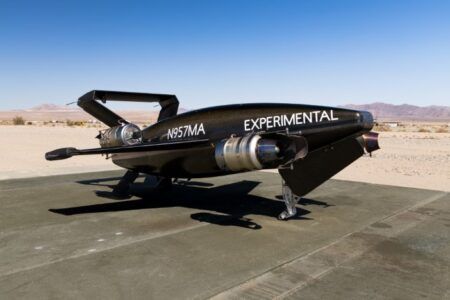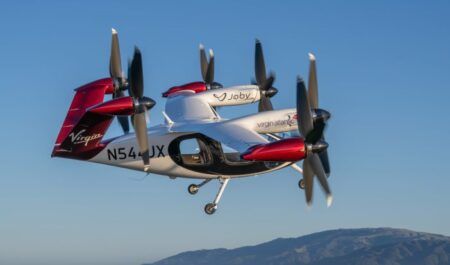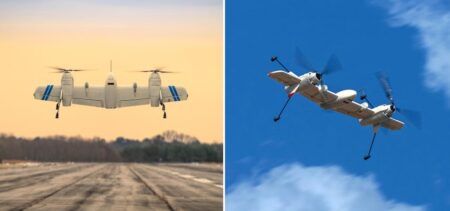The US Naval Research Laboratory (NRL) – in collaboration with the Air Vehicle Intelligence and Autonomy (AVIA) Lab at Pennsylvania State University (PSU), USA –completed testing of cooperative autonomous soaring algorithms used to keep unmanned sailplanes aloft for sustained flight durations, demonstrating the concept of shared soaring data between two unmanned aerial vehicles (UAVs) in flight.
The team launched 23 flights over two weeks beginning September 8 and October 26 last year, resulting in more than 30 hours of combined flight time. The tests culminated with two ‘powered’ sailplanes sharing telemetry data and cooperatively and autonomously soaring at altitudes in excess of 1km and for flight durations of over five hours.
The NRL-developed Autonomous Locator of Thermals (ALOFT) soaring algorithm guided NRL’s aircraft. The PSU aircraft was guided by the AVIA-developed AutoSOAR autonomous soaring algorithm, which itself drew from NRL’s ALOFT techniques. AutoSOAR’s addition of a series of atmospheric mapping and collision avoidance algorithms demonstrated inflight cooperation between the two aircraft on multiple flights.
“Autonomous soaring algorithms seek out naturally occurring areas of rising air called thermals,” said Dr Dan Edwards, aerospace engineer and principle investigator of the solar-soaring program. “Cooperative autonomous soaring combines data from multiple autonomous soaring aircraft to make a more complete measurement of the local atmospheric conditions. This atmospheric map is then integrated to guide both aircraft toward strong lift activity quicker than if it was just a single aircraft, a technique very similar to that used by a flock of soaring birds.”
Both aircraft demonstrated a robust autonomous soaring capability during the two weeks of testing. PSU’s aircraft flew multiple 2.5-hour flights despite carrying a battery with only enough capacity for four minutes of motor run-time. NRL’s best soaring flight was 5.3 hours while only running a motor-driven propeller for 27 minutes. Both aircraft rode thermals to altitudes in excess of 1,400m with several individual climbs in excess of 1,000m using nothing more than the power of the atmosphere.
Future testing will focus on reducing the separation distance such that both aircraft can actively soar in the same thermal at the same altitude. The team will also investigate the inclusion of solar photovoltaics to the cooperative autonomous soaring techniques, enabling long endurance flights of unmanned sailplanes using the power of the sun.
Solar photovoltaics will allow conversion of solar radiation directly to electricity to charge batteries or provide power for longer endurance or payloads. NRL is developing ‘drop-in’ power electronics and solar wings, which will enable battery charging with the goal of overnight flight.
January 8, 2016




